|
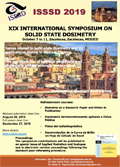
|
 |
|
 |
 |
|
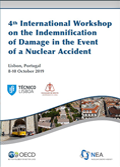
|
 |
|
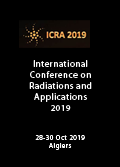
|
 |
|
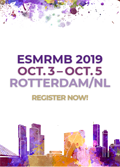
|
 |
| |
 |
| |
| |
|
|
|
|
Si no desea recibir mas este Boletín haga click aqui. |
|
|
|
|
|
|
|
|
|
|
|
|
|
|
|
 |
 |
 |
 |
Organization, Management and Staffing of the Regulatory Body for Safety - General Safety Guide
IAEA Safety Standards Series, 2018, 124 p.
This publication provides recommendations on meeting the requirements of IAEA Safety Standards Series No. GSR Part 1 (Rev. 1), Governmental, Legal and Regulatory Framework for Safety, in respect of the organizational structure, management and staffing of the regulatory body. It addresses the arrangements and processes regulatory bodies need to consider in carrying out their responsibilities and functions efficiently and effectively and in an independent manner.
|
It also provides guidance on how an integrated management system should be established and implemented in order to have in place both the core processes that help the regulatory body to perform its core functions, and the management and support processes that are necessary to run the regulatory body. The publication is intended for use by all regulatory bodies, irrespective of the size and type of facilities and activities they regulate.
|
 |
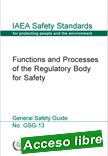 |
Functions and Processes of the Regulatory Body for Safety - General Safety Guide
IAEA Safety Standards Series, 2018, 137 p.
This Safety Guide provides recommendations on meeting the requirements of IAEA Safety Standards Series No. GSR Part 1 (Rev. 1), Governmental, Legal and Regulatory Framework for Safety, on the regulatory body's core functions and associated regulatory processes. This guidance is particularly important for regulatory bodies having responsibilities covering a range of facilities and activities that give rise to radiation risks and the important organizational interfaces between various regulatory authorities, which require effective coordination and cooperation.
|
It promotes a consistent approach to regulation and specifically addresses the release of facilities and activities from regulatory control including sites, buildings, equipment and material. The publication is intended to be used mainly by regulatory bodies but will also be useful for governments that are developing a regulatory framework for safety. It will also assist authorized parties and others dealing with radiation sources in understanding regulatory procedures, processes and expectations.
|
 |
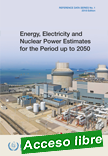 |
Energy, Electricity and Nuclear Power Estimates for the Period up to 2050 - 2018 Edition
IAEA Reference Data Series, 2018, 139 p.
The 38th edition of the annual Reference Data Series No. 1 contains estimates of energy, electricity and nuclear power trends up to the year 2050, using a variety of sources, such as the IAEA’s Power Reactor Information System and data prepared by the United Nations.
|
|
 |
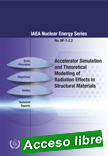 |
Accelerator Simulation and Theoretical Modelling of Radiation Effects in Structural Materials
IAEA Nuclear Energy Series, 2018, 116p.
This publication summarizes the findings and conclusions of the IAEA coordinated research project (CRP) on accelerator simulation and theoretical modelling of radiation effects, aimed at supporting Member States in the development of advanced radiation resistant structural materials for implementation in innovative nuclear systems. This aim can be achieved through enhancement of both experimental neutron-emulation capabilities of ion accelerators and improvement of the predictive efficiency of theoretical models and computer codes. |
This dual approach is challenging but necessary, because outputs of accelerator simulation experiments need adequate theoretical interpretation, and theoretical models and codes need high dose experimental data for their verification. Both ion irradiation investigations and computer modelling have been the specific subjects of the CRP, and the results of these studies are presented in this publication which also includes state-of-the-art reviews of four major aspects of the project: challenges and trends of structural materials development for present and future reactor designs, accelerator methodologies for material testing, multiscale modelling tools, and advanced examination techniques.
|
 |
 |
Deployment Indicators for Small Modular Reactors - Methodology, Analysis of Key Factors and Case Studies
IAEA TECDOC, 2018, 58 p.
This publication provides IAEA Member States with a methodology to evaluate the potential for deployment of small modular reactors (SMRs) in a national energy portfolio. It elaborates the specific attributes of SMRs and evaluates their deployment potential from the viewpoints of energy demand, finance and economics, infrastructure, climate change and energy security in an energy portfolio. |
Case studies are used to illustrate the types of conditions that are potentially favourable for SMRs and Member States can further adapt the process to country-specific needs.
|
 |
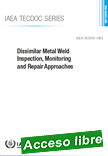 |
Dissimilar Metal Weld Inspection, Monitoring and Repair Approaches
IAEA TECDOC, 2018, 122 p.
This publication outlines the main aspects and issues to be considered when developing and improving dissimilar metal weld inspections in nuclear power plants. It presents good practices and lessons learned and provides guidance to inspection organizations and their managers, operating staff and to the local suppliers who provide inspection services for utilities, as well as some practical case studies.
|
The publication discusses requirements for an in–service inspection programme, different inspection techniques and methods, inspection qualification and evaluation of its results and challenges for ultrasonic inspection of dissimilar metal welds. The inspection programme and its requirements are based on the safety classification or safety significance of the component. An important aspect of this publication is the discussion of dissimilar metal welds repair- and replacement techniques and how to mitigate or remove cracks and corrosion that might have an impact on the safety margins.
|
 |
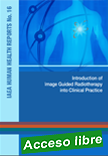 |
Introduction of Image Guided Radiotherapy into Clinical Practice
IAEA Human Health Reports No. 16
This publication provides guidelines, and highlights the milestones to be achieved by radiotherapy departments in the safe and effective introduction of image guided radiotherapy. Recent advances in external beam radiotherapy include the technology to image the patient in the treatment position, in the treatment room at the time of treatment. Since this technology and associated image techniques, termed image guided radiotherapy, are perceived as the cutting-edge of development in the field of radiotherapy, |
this publication addresses the concerns of personnel in radiotherapy departments as to the preparatory conditions and resources involved in implementation. Information is also presented on the current status of the evidence supporting the use of image guided radiotherapy in terms of patient outcomes.
|
 |
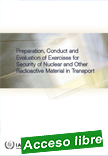 |
Preparation, Conduct and Evaluation of Exercises for Security of Nuclear and Other Radioactive Material in Transport
IAEA Non-serial Publications , 2018,120 p.
This publication provides practical advice for planners to prepare, conduct and evaluate nuclear material transport security exercises. Nuclear material transport security exercises are part of a comprehensive nuclear security regime. Exercises vary in scope and in scale, ranging from small drills, which focus on training, to large scale exercises, which aim at testing the overall command, control, coordination and communications arrangements.
|
The purpose of exercises is not to ‘demonstrate’ the quality of the arrangements, but rather, to identify weaknesses and areas where improvements can be made. Hence, exercises are an integral part of a sustainable and continuous improvement programme for nuclear transport security. Exercises can also be a tool to assess and validate existing transport security arrangements prior to gaining regulatory approval for actual transport operations or transport campaigns. The material provided in this publication is intended as an example of a logical process for the preparation, undertaking and evaluation of exercises, which needs to be adapted to suit national systems, local circumstances and the specific aim of each exercise. It constitutes a starting point for organizations that have not previously organized or managed exercise programmes, as well as a reference for organizations that wish to validate or improve their existing exercise programmes.
|
 |
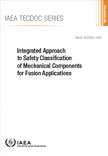 |
Lessons Learned from the Deferred Dismantling of Nuclear Facilities
IAEA Nuclear Energy Series, 2018, 116 p.
The publication discusses the issues that must be dealt with when preparing the facility for safe enclosure, or safely maintaining it for a long time. It provides details of lessons learned from deferred decommissioning of nuclear facilities following planned shutdown. These lessons have been learned from a variety of facilities, with a variety of hazards, configurations and decommissioning programmes.
|
While some of the considerations addressed may apply to facilities involved in an operating incident or accident, they are not specifically addressed by this publication as the individual nature of their hazards and decommissioning challenges precludes their use as exemplars. The publication addresses the preparation for, and the steady state part of the safe enclosure phase; it should be understood that in a later part of that phase the on- and off-site requirements and arrangements will change as plans and infrastructure are prepared for the next phase, which is the final dismantling, remediation and site release.
|
 |
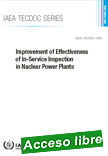 |
Improvement of Effectiveness of In-Service Inspection in Nuclear Power Plants
IAEA TECDOC, 2018, 98 p.
This publication outlines the main aspects and issues to be considered when developing and improving in–service inspection effectiveness in nuclear power plants (NPPs). It also provides a status of in-service inspection practices in NPPs in selected IAEA Member States, evaluating criteria for effective traditional in–service inspection and introducing the concept of risk–informed in–service inspection.
|
The strategies for improving in–service effectiveness discussed in this publication consider the entire framework of in–service inspection, including effective selection of the proper inspection scope, inspection interval and non-destructive examination efficiency.
|
 |
| |
|
|

|
|
|
| |
|
|
| |
| |
|
|
| |
| |
|
|
| |
| |
|
|
|
|
|
|
|
